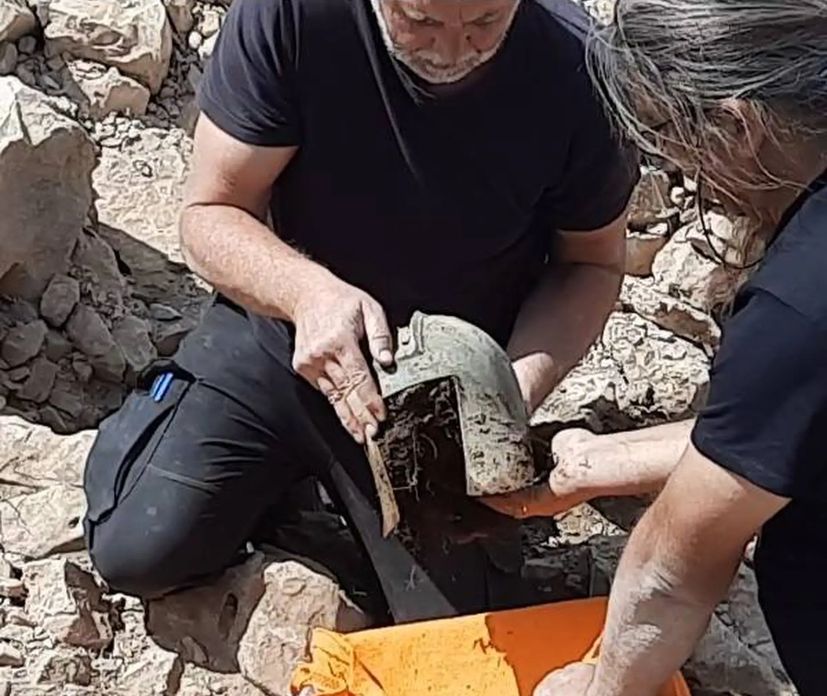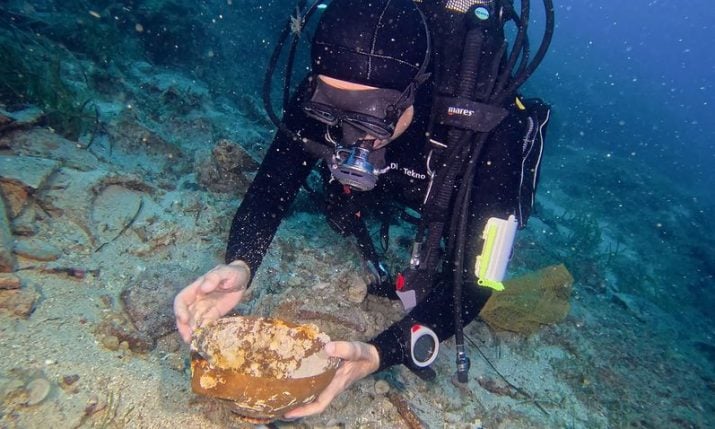2,500-year old Greek-Illyrian helmet found in Croatia
- by croatiaweek
- in News

(Photo credit: Ivan Pamić)
A team of archaeologists in the village of Zakotorac on Croatia’s Pelješac Peninsula has made a significant discovery.
They’ve uncovered a well-preserved Ancient Greek-Illyrian helmet, dating back over two and a half millennia, HRT reported.
This find marks the culmination of four years of research into burial mounds, which yielded a large amount of valuable material that could potentially reshape our understanding of Greek colonisation in the Mediterranean during the last millennium BC.
The excavation process for the helmet was meticulous, involving careful photography followed by the removal of every tiny piece of stone and earth. Eventually, the Greek-Illyrian helmet was successfully unearthed.
Archaeologists from the Dubrovnik Museums are participating in the excavations in Zakotorac on Pelješac – led by Dr. Domagoj Perkić, with assistant curators Paula Knego and Vicenco Pijerov, along with colleagues from other institutions – Hrvoje Potrebica, Marko Dizdar, Borut Križ, Marta Kalebota, Miona Miliša, Miroslav Vuković, and Mirna Šandrić, with assistance from Ivan Pamić.
The helmet is at least 2,500 years old
Preliminary dating suggests this helmet could originate from the sixth century BC. What’s particularly intriguing is the presence of two different types of helmets in the same location, indicating a continuity of power within the community. These helmets have always symbolized status and authority, HRT reported.
Excavations at this site began four years ago, and archaeologists have consistently been fortunate. In the first year alone, they uncovered one Greek-Illyrian helmet, which was a major surprise at the time. The discovery of another is truly sensational.
All the bones unearthed undergo bioarchaeological analysis to determine the minimum number of individuals, their genders, ages at the time of death, and other demographic details.
Experts coming in
In total, there are 27 burial mounds in Zakotorac, and the ongoing work has revealed a wealth of historical treasure, including various items like pins, clasps, fibulae, parts of necklaces made from amber or glass beads, and this year, for the first time, a diadem—a bronze band evidently worn on the head by a female.
Next week, a five-member team will be joined by colleagues from Italy, indicating a growing international interest in the project. It’s anticipated that this collaboration could lead to entirely new insights into Greek colonization in the Mediterranean. The archaeological discoveries on Pelješac continue to unveil hidden history.



